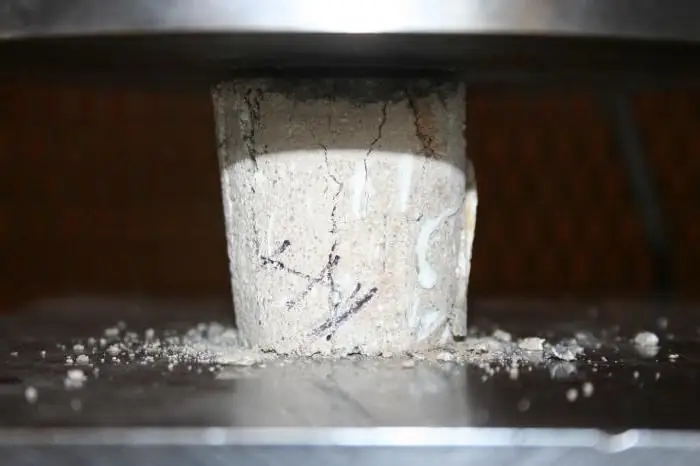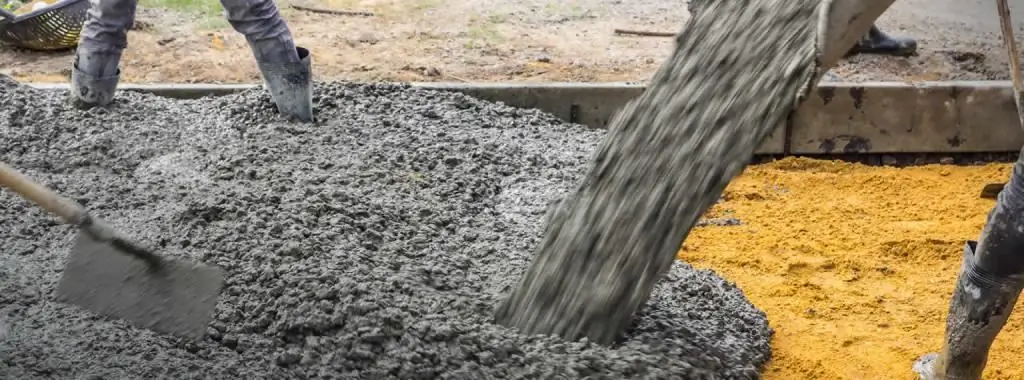2025 Author: Howard Calhoun | [email protected]. Last modified: 2025-01-24 13:10:47
Classification of concrete is carried out according to three main features: by purpose, by average density, and also by the type of binder in the mixture. According to its purpose, this material is actually divided into many subclasses. For example, in some conditions, increased heat resistance is needed, in others - impact resistance, etc. In each specific case, the optimal composition is selected that will not allow the structure to collapse during operation.

In general, the following classification of concrete is built according to its purpose:
- special purpose materials (used in conditions of high radiation, in acidic environments, etc.);
- mixtures for sidewalks, roads, airfields;
- ordinary concrete (foundations, ceilings, various reinforced concrete structures are made from it);
- hydraulic engineering samples (used in the creation of sewers, dams, canals, etc.).
Classification of concrete by density depends on what large aggregates are introduced into the composition. If the mixture contains pumice, tuff and other porous components, then it can weigh from 0.5 to 1.8 tons percubic meter (lightweight concrete, including slag concrete, pumice concrete, expanded clay concrete). In order to obtain especially heavy samples (more than 2.5 tons / cubic meter), steel filings are introduced into the concrete. Such mixtures are used in the creation of protective structures. Heavy concretes (1.8-2.5 tons / cubic meter) are composed of diabase, granite or limestone.
Classification of concrete also highlights ultra-light mixtures, such as aerated concrete, foam concrete or foam silicate. Their weight per cubic meter is less than half a ton. Due to the increased cellularity, concretes of this class have low thermal conductivity, but at the same time low strength. Therefore, they are mainly used as facing materials.

Classification of concrete by types of binders is more than extensive. The most uncommon substances today are silicates with the autoclave curing method. Also infrequently there are mixtures based on liquid glass, glass-alkali components that are needed to form heat-resistant concrete.
The most common materials are based on gypsum, which are used to make finishing elements, internal partitions, as well as mixtures for waterproof coatings. In addition, there are widely used cement concretes (like Portland cement), slag-alkali (a relatively new product on the construction market), polymer cement compositions.

Classification and properties of concrete are necessary in order to determine the main indicators of the mixture and futuredesigns. In particular, for such compositions, such characteristics as mobility (the ability to spread under its own weight), water resistance (at what pressure a sample of 0.15 meters does not let water through) and, which is very important for Russia, frost resistance, are distinguished. For example, concrete marked F1000 can withstand a thousand thaw-thaw cycles, which is especially important in regions with unstable weather, while the F50 sample can withstand only 50 such cycles.
Recommended:
Porter's strategies: basic strategies, basic principles, features

Michael Porter is a renowned economist, consultant, researcher, teacher, lecturer and author of numerous books. who developed their own competition strategies. They take into account the size of the market and features of competitive advantages. These strategies are detailed in the article
Basic testing methods for asph alt concrete

The problem of the quality of the road surface in our country is extremely acute. Therefore, it is very important when accepting the work of construction services to qualitatively and correctly test reinforced concrete. And based on the results of these works, a decision should already be made on the commissioning of road transport infrastructure facilities. In this article, we will talk about the features and rules (GOST) of testing asph alt concrete
Concrete strength meters. Concrete testing methods

When constructing buildings and structures, it is very important to monitor the strength of concrete. For this, special devices are used. Measurement parameters can vary quite a lot
Determination of concrete strength: methods, equipment, GOST. Control and evaluation of concrete strength

When checking building structures, the determination of the strength of concrete is carried out to determine their state at the current time. Actual performance after the start of operation usually does not match the design parameters
Concrete mix: properties, composition, types, grades of concrete, characteristics, compliance with GOST standards and application

Among the main properties of the concrete mixture, which is also called hydrotechnical concrete, it is necessary to highlight the increased water resistance. Buildings are being built from this material to be used in swampy areas or in regions that are prone to flooding

